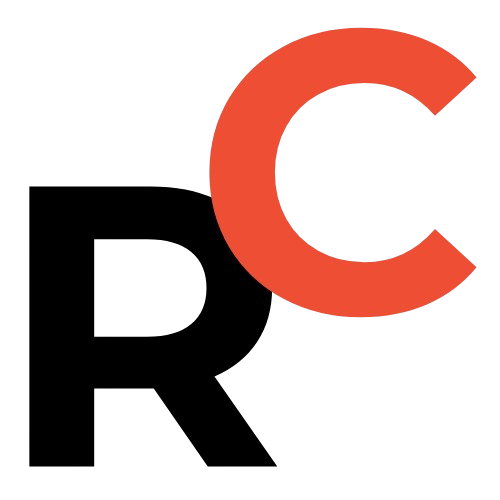Key Points
- Goldman Sachs (Gaosheng 高盛) maintains an overweight on A‑shares and H‑shares, estimating roughly 8% upside for A‑shares and about 3% for H‑shares over the next 12 months.
- Domestic institutional reallocation could be massive: if ownership rises from the current ~14% to the emerging‑market average of 50%, incremental buy volume could be roughly ¥32 trillion RMB (about $4.41 trillion USD), or ¥40 trillion RMB (about $5.52 trillion USD) at a 59% ownership level.
- International sell‑side upgrades are targeting big names — firms like Alibaba 阿里巴巴, Tencent 腾讯, Baidu 百度 and BYD 比亚迪 saw higher targets (e.g., Alibaba ADR target $179 ≈ ¥1,297.75 RMB; Tencent target HK$735).
- Foreign flows into China tech are rising: KraneShares KWEB 中国海外互联网ETF AUM reached about $9.407 billion USD (≈ ¥68.20 billion RMB), roughly a 13% increase from $8.323 billion at end‑August.

Summary
Goldman Sachs maintains overweight on A‑shares as global sell‑side upgrades and growing foreign inflows push capital into Chinese technology names.
Global investment banks have recently raised price targets for a number of large Chinese stocks.
Companies such as Alibaba (Alibaba 阿里巴巴), Tencent (Tengxun 腾讯), Baidu (Baidu 百度) and BYD (Biyadi 比亚迪) received upgrades or higher targets from international sell‑side firms.
At the same time, international capital is actively increasing allocations to Chinese technology sectors—driven by perceived competitiveness in AI, robotics and biotechnology.
Goldman Sachs (Gaosheng 高盛) reiterated an overweight stance on both A‑shares and H‑shares today.

Resume Captain
Your AI Career Toolkit:
- AI Resume Optimization
- Custom Cover Letters
- LinkedIn Profile Boost
- Interview Question Prep
- Salary Negotiation Agent

Goldman Sachs: maintain overweight on A‑shares and H‑shares
On September 18, Goldman Sachs (Gaosheng 高盛) published an updated view from its China equity research team, led by the firm’s chief China equity strategist.
Goldman said it is maintaining an overweight (relative‑weight) stance on both A‑shares and H‑shares.
The bank estimates the next 12‑month upside potential at roughly 8% for A‑shares and about 3% for H‑shares.

Market characterization: consolidation, not reversal
Goldman argues the current move in Chinese markets is more a consolidation than a structural reversal.
While longer‑term rallies require earnings growth to support higher prices, Goldman highlights that liquidity remains a necessary condition for sustained market rallies—and liquidity conditions today are better than in prior periods.
Corporate earnings for major China indices are forecast to continue growing in the mid‑ to high single digits this year and next, which provides some fundamental backing to the recovery.
Goldman’s proprietary retail sentiment indicator for A‑shares suggests the market is in consolidation rather than an outright reversal.
On valuation, most indicators show large‑cap Chinese stocks are not overvalued: index price‑to‑earnings ratios sit in the middle of historical ranges.

Find Top Talent on China's Leading Networks
- Post Across China's Job Sites from $299 / role, or
- Hire Our Recruiting Pros from $799 / role
- Qualified Candidate Bundles
- Lower Hiring Costs by 80%+
- Expert Team Since 2014
Your First Job Post

Funding and structural potential
Goldman notes that both domestic and foreign institutional flows have been key liquidity contributors to the recent rebound.
The bank estimates that Chinese household wealth could support a substantially larger allocation to equities—potentially in the range of multiple trillions of U.S. dollars—though any reallocation would be gradual and long term.
Goldman modeled the impact of a shift in domestic institutional ownership.
If domestic institutions increased their share of listed equity holdings from the current ~14% to the emerging‑market average of 50%, the potential incremental buy volume would be roughly ¥32 trillion RMB (about $4.41 trillion USD).
If domestic institutions rose to the developed‑market average of 59%, the potential incremental buy volume would be roughly ¥40 trillion RMB (about $5.52 trillion USD).

ExpatInvest China
Grow Your RMB in China:
- Invest Your RMB Locally
- Buy & Sell Online in CN¥
- No Lock-In Periods
- English Service & Data
- Start with Only ¥1,000

Several Chinese stocks see higher targets from international banks
In recent days multiple international brokers raised target prices on large China names on the back of rapid progress in AI infrastructure, models and applications.
- Goldman Sachs raised its Alibaba (Alibaba 阿里巴巴) U.S. ADR target from $163 to $179 per ADR.
- That new U.S. target equates to approximately ¥1,297.75 RMB ($179 USD).
- Goldman also raised its Hong Kong target from HK$158 to HK$174 per share.
- HK$174 ≈ $22.31 USD ≈ ¥161.80 RMB.
- Citi (Huaqi 花旗) affirmed a positive view on Tencent (Tengxun 腾讯), keeping a Buy stance and setting a target of HK$735 per share.
- HK$735 ≈ $94.23 USD ≈ ¥683.17 RMB.
- Jefferies (Jiefurui 杰富瑞) raised Baidu’s (Baidu 百度) U.S. target from $108 to $157 per ADS.
- $157 ≈ ¥1,138.25 RMB.
- Jefferies also raised the Hong Kong target to HK$152 per share.
- HK$152 ≈ $19.49 USD ≈ ¥141.27 RMB.
- CLSA / Lyon Securities (Liáng 里昂证券) reiterated conviction in BYD (Biyadi 比亚迪) H‑shares with a target of HK$140.
- HK$140 ≈ $17.95 USD ≈ ¥130.18 RMB.
- Daiwa/Daiwa Securities (Dahe 大和证券) raised forecasts and target on China Biologic Products / China Biotech (zhōngguó shēngwù zhìyào 中国生物制药), lifting the target to HK$10.
- HK$10 ≈ $1.28 USD ≈ ¥9.30 RMB.

International capital is reallocating into Chinese tech
Portfolio managers and international funds are increasing exposure to Chinese technology.
Observations cited by market participants include:
- Progress in China’s AI stack (infrastructure, models, applications) that supports durable earnings upside for major internet and cloud platforms.
- Leading positions in human‑form robotics and biotech/drug R&D, which many global investors see as structural advantages for China.
- Evidence of rising foreign investor flows into China‑focused ETFs and funds.
For example, KraneShares China Internet ETF (KWEB 中国海外互联网ETF‑KraneShares) saw assets under management rise to about $9.407 billion USD (≈ ¥68.20 billion RMB) as of September 15.
That figure was up from $8.323 billion USD (≈ ¥60.37 billion RMB) at the end of August—an increase of roughly 13% over that period.

- End-August AUM: $8.323 billion USD (≈ ¥60.37 billion RMB)
- September 15 AUM: $9.407 billion USD (≈ ¥68.20 billion RMB)
- Approximate Increase: 13%
Selected strategic investments highlight international interest
Recent strategic financings underline active international capital participation in Chinese tech and new‑economy companies.
- Infini Capital (Wuji Ziben 无极资本) agreed a strategic financing with GCL Technology/協鑫科技 (Xiexin Keji 协鑫科技) via a directed share issuance totaling about $700 million USD (≈ ¥5.08 billion RMB).
- Weimob (Weimeng 微盟集团) signed a subscription agreement with the same investor for roughly $200 million USD (≈ ¥1.45 billion RMB).
- The funds are earmarked primarily for AI R&D and international expansion.
Infini Capital’s founder and CIO said the fund’s long‑term investment horizon matches the patient capital needs of AI commercialization.
The fund prioritizes technology leadership and policy tailwinds—areas it believes Chinese AI leaders are well positioned on.

- GCL Technology/協鑫科技 (Xiexin Keji 协鑫科技): $700 million USD (≈ ¥5.08 billion RMB) via directed share issuance
- Weimob (Weimeng 微盟集团): $200 million USD (≈ ¥1.45 billion RMB) via subscription agreement
- Earmarked for: AI R&D and international expansion
Manager views and market context
Scottish‑based and global managers cited in the coverage emphasize that China’s equity market is entering a valuation‑recovery window.
Factors cited include domestic policy support (described in commentary as the new “National Nine Policies” or “国九条”), anti‑over‑competition measures, and measures that could structurally raise corporate profitability and shareholder returns.
Morgan Stanley (Mogen Shidanli 摩根士丹利) and other firms note China’s competitiveness in robotics, AI and biotech as reasons international investors should consider increasing allocation.
Several large long‑only funds and ETFs have already shown meaningful inflows into China tech names and sectors.

What this means for investors
Goldman’s view—an overweight stance backed by better liquidity conditions, mid–high single‑digit earnings growth and improving sentiment—suggests investors looking for selective exposure to China might consider thematic pockets the bank highlights.
Those thematic pockets include:
- Leading private enterprises.
- AI.
- Firms benefiting from anti‑“involution” policy easing of excessive competition.
- Companies with improving shareholder returns.
That said, research houses and platform issuers caution investors that market moves are still partially liquidity‑driven.
Fundamentals matter for sustained rallies, and geopolitical/regulatory volatility remains a risk.
This coverage is informational and not investment advice.

Quick takeaways — what to watch next
- Monitor foreign flows into China-focused ETFs and large-cap tech names as a near‑term liquidity indicator.
- Track corporate earnings guidance and actuals for the big internet/cloud players to see if mid‑ to high single‑digit growth is sustained.
- Watch policy signals tied to the “National Nine Policies (国九条)” and anti‑over‑competition enforcement for potential structural impacts.
- Keep an eye on domestic institutional allocation trends—any meaningful shift above the ~14% ownership baseline would create substantial incremental demand.

Practical actions for investors, founders, and tech operators
- Investors: consider selective, thematic exposure rather than blanket allocation.
- Founders: emphasize monetization paths and shareholder‑friendly governance to capture investor interest.
- Tech operators: highlight AI, robotics, and biotech moats in fundraising and strategic updates.

Linking opportunities
- Suggested anchor text: Goldman Sachs Research — link to Goldman Sachs insights page in references.
- Suggested anchor text: KraneShares KWEB — link to the KraneShares KWEB page in references.
- Suggested anchor text: Alibaba ADR target — link to coverage sections about Alibaba price targets.
- Suggested anchor text: China AI investment trend — link to recurring coverage or a deep dive on AI infrastructure and policy.
Goldman Sachs maintains overweight on A‑shares — a signal investors and operators should monitor as capital reallocates into Chinese tech.

![China's A-Share Market Sees Surge: 1.92 Million New Accounts in April, Up 31% YoY Reveals Strong Investor Interest [FreshFromChina]](https://freshfromchina.com/wp-content/uploads/2025/05/chinas_a_share_market_sees_surge_192_million_new_accounts_in_april_up_31_yoy_reveals_strong_investor_interest.png____FreshFromChina-150x150.png)




